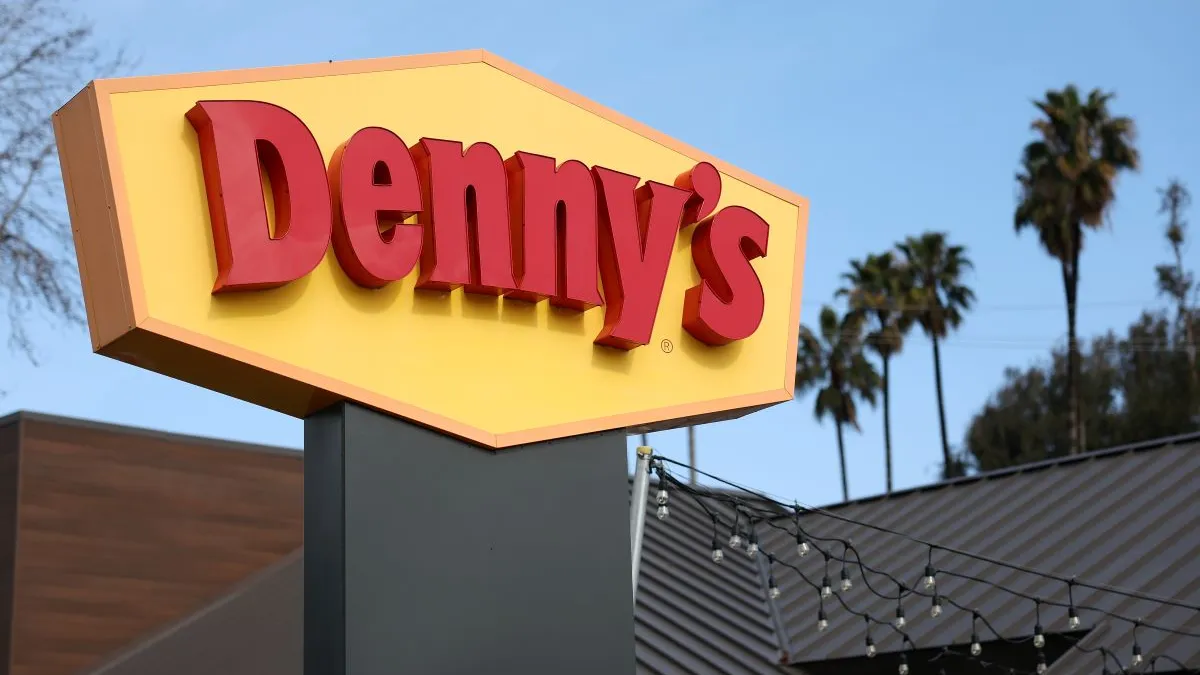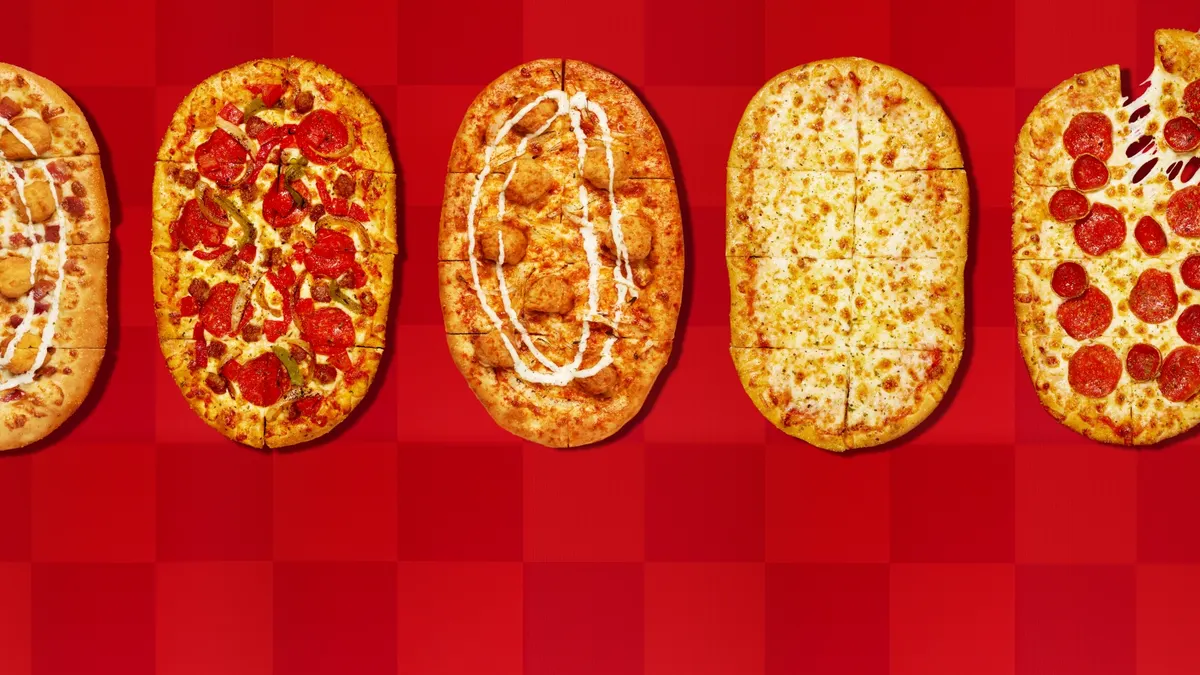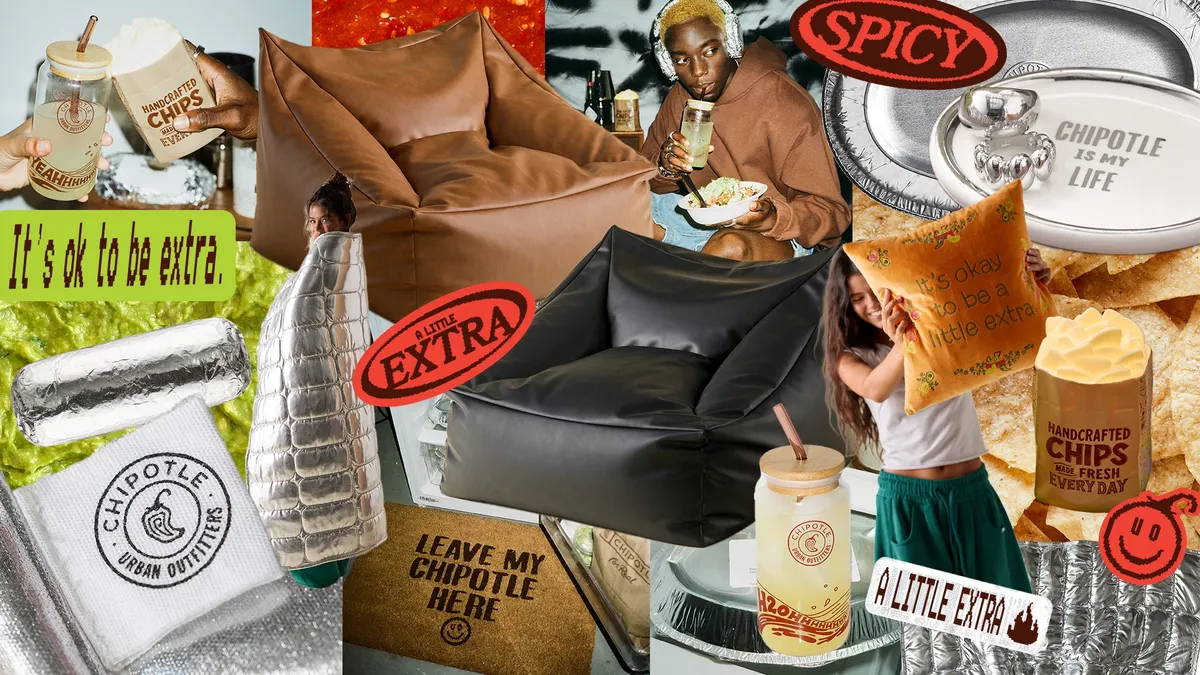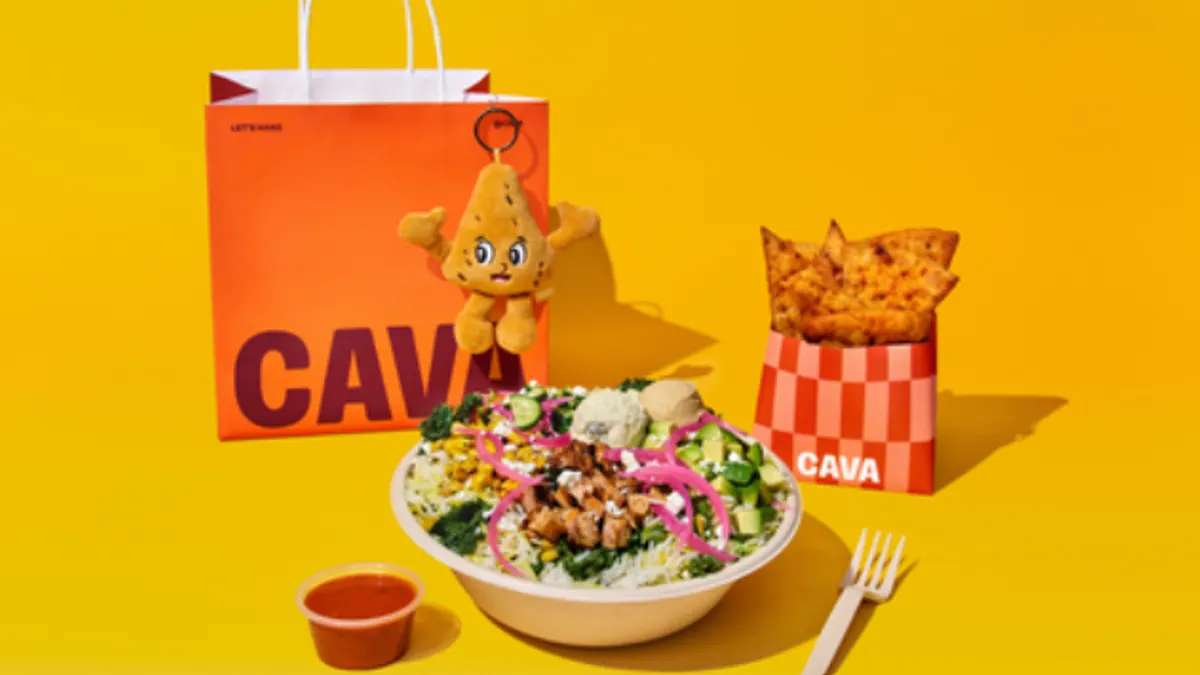This article is the fourth in a six-part series exploring how major restaurant cities were impacted by the pandemic. Future articles will be posted here.
Snapshot
- Restaurant and bar closures: About 150, including businesses closed until further notice, as of March 11
- Restaurant job losses to date: 158,300, or a 41.8% decline, in January 2021 compared to January 2020 for the leisure and hospitality sector in Chicago/Joliet/Naperville, Illinois
- Restaurant revenue losses to date: -64.4% for the city of Chicago’s leisure and hospitality sector as of March 3, 2021 compared to January 2020
"Every month, the rules change and you have to find a new way to make money and stay alive and basically launch a new product. It's like constantly being in the first month of opening a restaurant."

Peter Ternes
Owner, Middle Brow
Chicago's restaurants are used to tough times. With average temperatures in the low 20s and highs in the low 30s during January and February, people are typically holed up during the winter. In 2018, when cold weather hung around like an unwanted guest into April, chains like McDonald's, Dunkin' and Darden saw a half-percentage point decline in same-store sales early in the second quarter. And in 2019, when temperatures dipped to 33 degrees below zero during a polar vortex in late January, restaurant traffic for both QSRs and full-service restaurants fell 11% compared to three weeks prior.
But the pandemic's overlap with Chicago's icy weather proved a brutal combination for local restaurants. Establishments such as Longman & Eagle, Cobblestone in Lincoln Square, The Dearborn and Grant Park Bistro, decided to temporarily close their doors during the winter instead of trying to battle two equally difficult forces. As Longman & Eagle co-owner Peter Toalson told the Chicago Tribune, it would've been more expensive to stay open when you calculated the cost of cleaning, salaries, benefits and wasted food with no sales.
These closures not only put jobs in jeopardy but also the city's culture. Chicago doesn't have big tourist attractions like the Hollywood Sign in Los Angeles or Central Park in New York City. Instead, restaurants are the draw for locals and tourists alike, especially on the weekends in fall and early winter, Pete Ternes, owner of brew pub Middle Brow, said.
Chicago's restaurants showed they had staying power though. While revenue was down 64% for leisure and hospitality, only about 150 restaurants closed during the past year, according to The Infatuation. The city's restaurants also had access to a steady stream of government support, which particularly helped businesses in low-income areas, with two grants by the city specifically targeting the hospitality industry.
"The food industry here, because we're so critical to culture … relatively speaking, has done maybe slightly better," Ternes said.
How changes to dining policy in Chicago affected COVID-19 rates
Coronavirus cases skyrocketed over 7,000% during the first 30 days of Chicago's indoor dining shutdown, which began March 16. This surge was similar to the rise in cases other U.S. cities grappled with when little was known about the coronavirus’ spread, but case growth stabilized leading into the summer.
Thirty days before indoor dining was reopened to allow for 25% capacity at the end of June, the monthly increase was at just 15%. However, 60 days after it was enacted, the rate jumped to 33%. Cases also more than doubled 30 days after compared to 30 days prior to when the city eased restrictions further to 40% capacity on Oct. 1. Still, it's difficult to know if there was a correlation between dining capacity allowances and case rates, as several other factors — such as personal gatherings during the holdings — were at play. In fact, when looking at percent increases 60 days after indoor dining was banned again on Oct. 30, the numbers continued to rise to 92%.
Contract tracing from the city may offer some clues. Only 1.67% of outbreaks with onset dates on or after July 1, 2020, through March 19, 2021, were tied to restaurants.
While Ternes said he doesn't have a strong sense if there was a direct correlation to case counts and dine-in restrictions, he thinks it would make sense for transmissions to dip when businesses were closed and people were having less interaction with each other.
But extended shutdowns weren't the strategy for long. Chicago's original reopening plan shared in May was to reach Phase 4, which included indoor dining at 25%, in late 2020 or 2021, Ternes said. Thinking his business would be takeout only for quite some time, Ternes spent some of Middle Brow's Paycheck Protection Program money and invested in some critical changes to survive. Weeks later, however, the state pushed to reopen dining rooms at 25%, Ternes said.
"We said, 'Hey, you were nervous two weeks ago and suddenly you're fine with this? We don't trust you,'" Ternes said.
But June 26, the day restaurants could seat diners for the first time since the shutdown began, was one of the worst days of protests in the city over systemic racism, which were also widespread across the country last summer.
"They still went ahead with the opening. There was gunfire in our neighborhood on a nightly basis," Ternes said.
Ternes said he realized the rush to reopen likely stemmed from local leadership concerned that a strict closure meant a lack of tax revenue coming in, but that didn't make reopening any easier.
"I only wish the restrictions were stronger and more thoroughly enforced across the country earlier," Ternes said. "We might have saved a lot of lives and reduced the likelihood and/or prominence of variant strains that could cause the current crisis to extend on into next year."
The need for financial support
The Illinois Restaurant Association predicted early in the pandemic that 20%, or about 5,000 restaurants in Illinois, will permanently close as a result of the crisis. As restrictions deeply narrowed how restaurants could bring in revenue, Chicago released several initiatives to try to alleviate this financial burden.
Restaurant-targeted support issued by city or state:
- In partnership with Catalyst Fund and other private sponsors, the city in March 2020 provided $100 million in low-interest loans to small businesses severely impacted by the pandemic through the Chicago Small Business Resiliency Loan Fund. The loans targeted historically underserved communities. Eligible businesses were required to prove a revenue loss of over 25% due to the pandemic and employ fewer than 50 people. In the first two weeks of the program, 2,000 applications were processed to determine eligibility, 300 were in the underwriting process and 124 loans were approved.
- In April, the city announced a $5 million Microbusiness Recovery Grant Program to provide grants of $5,000 to up to 1,000 microbusinesses in low- and moderate-income neighborhoods. Grants were awarded on May 11 to businesses with four or fewer employees, less than $250,000 in annual revenue and proof of a 25% decrease in revenue because of the pandemic.
- Chicago launched the $6.2 million Together Now Grant Fund for small businesses and not-for-profits that experienced economic distress or operation loss during the pandemic or had damage due to protests over systemic racism. Over 4,000 applications were received. Businesses that experienced 25% revenue loss because of the pandemic were eligible for grants of up to $4,000 to cover operating costs. Businesses that experienced damage following protests were eligible for infrastructure grants of up to $10,000.
- DoorDash, in partnership with the Illinois Restaurant Association, provided $500,000 in financial support to Chicago restaurants to help cover the costs of winterizing outdoor dining areas.
- The city provided a $10 million Chicago Hospitality Grant Program for restaurants and bars using Cares Act funding to supplement state and federal relief programs. As of Dec. 16, grants of $10,000 were awarded to 995 independent bars and restaurants.
- In December, Chicago announced the High Road Kitchens Program, a $1 million program to provide grants to restaurants that commit to paying non-tipped employees $15 per hour by 2026 and provide free meals to community members in need. The program was funded and administered by One Fair Wage. To be eligible, businesses had to report annual revenue under $3 million, to have experienced annual revenue loss of 25% during the pandemic. Grants would be provided in $10,000 increments for each 500 free meals served to communities in need, maxing out at $30,000 per restaurant.
"It's been pretty terrible. I'd say there are certainly happy moments and there is weirdly some kind of joy associated with overcoming serious tall obstacles. But most of the year has been a real struggle."

Pete Ternes
Owner, Middle Brow
Up Close: Middle Brow forced to constantly pivot as 'every month, the rules change'
The first 31 days of 2020 were an exciting time for Ternes and co-owner Polly Nevins. Middle Brow, celebrated its first year in operation at a brick-and-mortar location, and the couple, who got married prior to opening, finally got to go on a long-awaited honeymoon.
But while they were on vacation, stories were circulating about what was happening in Wuhan, China. The escape from the day-to-day grind of the restaurant allowed Ternes to think like an owner again and consider how the virus might impact Middle Brow in the long term, he said.
"I immediately thought, 'We're going to be shut down,'" Ternes said. "This is going to take over everything and [restaurants] are the first thing to be shut down. Restaurants can't exist in a pandemic world. … All I was worried about was making rent for the entirety of the pandemic."
A week before Gov. J.B. Pritzker banned indoor dining, Middle Brow made its first major pivot. It converted to a grocery store since it was already selling beer, bread and a few other house-made products, Ternes said.
"We had all of this farm food in our walk-in and dry storage, and we thought what better way to support farmers and, more generally, the community," Ternes said. The company also sold make-at-home pizza kits for customers.
Middle Brow collaborated with local musicians, who no longer had a venue to perform, to create customized pizza and beer kits that would include their newly released records. In its store, the brewpub sold seeds and compost for gardening and collaborated with local bookstores to sell books, Ternes said. During Christmas, it sold trees in its backlot.
"We added all those things. And each time we did, we saw an increase in business and a little more stability," Ternes said.
Being creative and finding new ways to connect with customers was built into the nature of Middle Brow. Before Ternes and Nevins opened a physical location, Middle Brow was a nomadic brewery for the better part of 10 years.
Expanding its business model
Middle Brow tried delivery via third-party apps, but Ternes said they were a rip off. The company tried to facilitate delivery itself, even with Ternes going out and fulfilling orders, but it was a huge labor and capital investment, he said.
"If we knew this would be the story for two more years, we might make the investment and change things around, but because it seems like the light is at the end of the tunnel, we're letting that one go," Ternes said.
Instead, the company found other ways to reach its customers.
"After Labor Day, it was like we just all hallucinated a pandemic where everyone was listening ... heeding the warnings and obeying the rules," Ternes daid. "Then everyone was like, 'I'm tired of this. We're going back to life.' That meant everyone was going back to restaurants again, no one was buying our groceries."
That was when Middle Brow decided it needed to open up its patio and serve a daytime menu, which includes pastries, espresso and breakfast and lunch sandwiches, Ternes said. Since the pandemic, the company hasn't offered dine-in, with the exception of full-service on its patio, and only offered takeout or online ordering for groceries or from its daytime menu.
But by then tents cost about $25,000 to $30,000 dollars to purchase or rent for six months, and lumber costs were high as well, Ternes said.
"We didn't have the money for that," Ternes said. "So we decided to build pergolas and cover them for less than a third of the cost."
Unfortunately, because of timing issues and inclement weather, the company wasn't able to get the covers installed, and its patio was only open for about three months before the company closed it ahead of Thanksgiving.
The daytime menu helped a lot, and people have been ordering to-go in the winter. Saturday and Sundays are particularly busy, Ternes said.
"That's been a huge, huge help to get us through the winter," Ternes said.
But even with all of its additions, Middle Brow is a fraction of what it used to be, which was a lively, bright and fun place, Ternes said. While its regulars still see Middle Brow as that, especially as they use it for an outlet from being inside all the time, Ternes sees last year as a step down.
"It's been pretty terrible. I'd say there are certainly happy moments and there is weirdly some kind of joy associated with overcoming serious tall obstacles," Ternes. "But most of the year has been a real struggle."
The impact of confusing regulations
During its first year, Ternes and Nevins were working 100-plus hour weeks. Just as they were ready to pull back because the restaurant was starting to run itself, the pandemic hit. While Middle Brow was able to make multiple pivots, Ternes said this past year was worse than its first year in operation.
"Every month, the rules change and you have to find a new way to make money and stay alive and basically launch a new product," Ternes said. "It's like constantly being in the first month of opening a restaurant."
Middle Brow’s decision to stay closed while others around it opened was made with good reason. Ternes and his wife were extra cautious because they were also expecting a baby during the pandemic, he said.
"Our staff was so scared by how it was handled in the early days that no one trusted the political leaders and what they said," Ternes said. "When our staff saw that COVID wasn't getting worse for a long enough time, they started feeling more comfortable, and we started getting more comfortable with it."
But all this caution came with a cost. Customers who were bored at home ended up eating at restaurants with indoor dining, and Middle Brow's revenue took a dive, Ternes said.
"It's been a massively frustrating thing to survive this roller coaster of local and state regulations," Ternes. "But we survived. That is probably why we've had the year we've had because the rules constantly changed."
Finding other ways to survive
Middle Brow tried to apply for local grants, but didn't have much luck because the grants were limited to businesses in low-income communities.
"We have an amazing customer base here that helps support us and we are grateful for that," Ternes siad.
The company got Paycheck Protection Program loans, but Ternes said the program was poorly designed, especially since businesses had to retain their employees to receive full forgiveness.
"Because we were not allowed to operate normally, we couldn't bring everyone back so our forgiveness quotient was much smaller and it turned into a loan," Ternes. "It's like it helped the people who didn't need help and didn't help the people who did need help."
While PPP likely helped Middle Brow from going under, the company now has interest payments associated with these loans, Ternes said.
One of its biggest financial changes the company made was ending tipping and adding a 20% service charge, which is helping create a more realistic long-term model, Ternes said. After crunching some numbers, Ternes found that while employees would have a longer workday and make less money per hour, they’d make more money on a monthly and yearly basis.
"They all looked at the numbers and [the benefit] was undeniable, and it also made for a more well-rounded staff and a better working experience, a better quality of life and a life they can plan around and it's less risky," Ternes said.
Middle Brow customers haven't commented negatively about the policy change, which Ternes said could be because the company is upfront about no-tipping. Customers who don't agree with that policy could be shopping elsewhere, Ternes said.
"The tip culture was stupid from the beginning and unfair. … If you want to eat out, you just have to get used to these unique models that try to rectify the imbalance between front-of-house and back-of-house restaurant workers," Ternes said.
Looking toward the future
Things are also going to be much different this year for Ternes and Nevins, especially with a new baby. They won't be able to work the same 15- to 17-hour days they were putting in during the pandemic.
"We need to make this business function without us doing that, which was never sustainable. So that'll be a good thing to learn this year," Ternes said.
How Chicago's restaurant foot traffic shifted a year after the pandemic
One thing that will help the business start running itself is the addition of its patio, which Middle Brow opened back up last week. Ternes said he hopes things will stabilize a little bit for the rest of the year with the addition of its outdoor pergolas, which he expects will be a permanent fixture.
Other changes made during the pandemic will be permanent, too, such as spreading people out now that it has more capacity outside. Instead of diners cramming into the front area, there is now a more open space for people to wait for their table, Ternes said.
"COVID-19 has forced us to make changes that will be with us forever, and if we can get through it, [it] will make our revenue stream more diverse and safer and increase the value of our company and increase the quality of life of our employees," Ternes said.






















